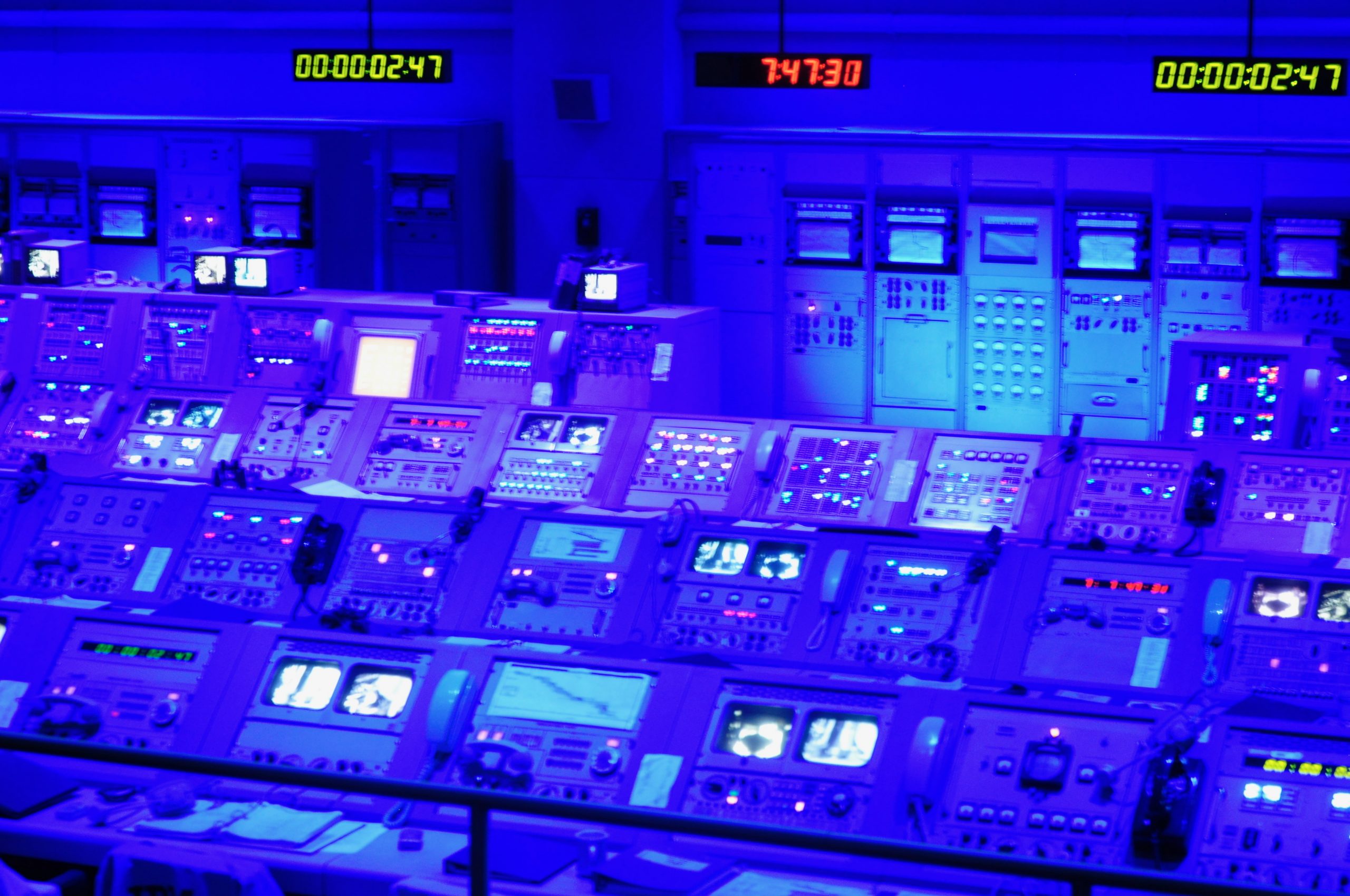waarom een digitale paradigma shift voor de bouw noodzakelijk is
Aan de bouw als ‘producent’ en de gebouwde omgeving als ‘product’ worden tegenwoordig enorme maatschappelijke eisen gesteld: van klimaatdoelen tot langer zelfstandig wonen, van waterberging tot aardbevingsbestendigheid, van circulariteit tot snel leveren van miljoenen woningen, van overlast op de bouwplaats tot gevaarlijke werkomstandigheden, om van de gevolgen van de anderhalve meter samenleving nog maar niet te spreken. Deze eisen behoren niet alleen tot hele verschillende categorieën (kwaliteit, kwantiteit, arbeid, samenleving), maar ook tot wat nu geheel verschillende disciplines zijn: ontwerp, stedenbouw, constructies, installatietechniek enz. Bovendien staan ze vaak onder grote druk: van het gas af in 2030, volledig circulair in 2050.
Daarnaast is de bouw als bedrijfstak achtergebleven bij de andere industrieën als het gaat om de doorvoering van automatisering van het productieproces: efficiency en effectiviteit van de processen zijn de afgelopen decennia nauwelijks gestegen waarmee de bouw ver achterblijft bij bijvoorbeeld de auto-industrie. Verreweg de meeste projecten volgen nog een N=1 strategie – elk geval wordt als nieuw benaderd – en de marges zijn op alle fronten – capaciteit, planning, middelen – heel smal waardoor ruimte voor innovatie ook zeer beperkt is.
Betrokken maatschappelijke partners – overheden, beroepsorganisaties, universiteiten en hogescholen – proberen de benodigde veranderingen in de sector te ondersteunen door het organiseren van themabijeenkomsten, het formuleren van roadmaps en kanaliseren van (praktijk)onderzoek zoals ‘de Bouwagenda’ (https://www.debouwagenda.com/default.aspx), het BTIC (Bouw- en Techniek Innovatiecentrum – https://btic.nu) en Nu Bouwen aan Morgen (https://www.bouwendnederland.nl/nu-bouwen-aan-morgen/bouw-2030). Daarnaast worden allerlei maten en kwaliteitswaarborgen ontwikkeld – zowel algemeen als per specifiek onderwerp – om te kijken of sommige doelstellingen gehaald zijn (BREEAM, LEED, Kwaliteitskader Scholenbouw, enz.): maar deze staan uit hun aard met de rug naar de toekomst. Je kunt immers geen punten geven voor een technologie die er nog niet is.
Ondertussen begint de digitale revolutie die zich in andere sectoren al grotendeels voltrekt nu ook de bouw te bereiken: op de recent gehouden digitalfutures conferentie (https://www.digitalfutures.world/manifesto) waaraan vele duizenden architecten, onderzoekers en studenten van over de hele wereld deelnamen bleek hoeveel er met de huidige techniek al mogelijk is. Zo heeft het Chinese XKool een AI gebaseerd ontwerpplatform dat real time individuele huizen en stedenbouwoplossingen genereert, gebruikt het Europees/Amerikaanse Spacemaker machine learning om stedenbouw te verbeteren en werkt de Londonse Patrick Schumacher aan autonoom opererende, zelflerende, zich naar de door het object ingeschatte behoefte verplaatsende en omvormende architectonische elementen.
Deelnemend aan digitalfutures zijn we al in een nieuwe wereld, een wereld die we in al de bovengenoemde maatschappelijke initiatieven nog als een luchtspiegeling zien. Er lijkt zich een haast onoverbrugbare kloof tussen deze twee werelden te bevinden: men spreekt een andere taal. In het ene geval lijkt er gedacht te worden in een doorgaande ontwikkeling: van handwerk, naar mechanisering, naar automatisering zoals van de geschreven tekst, naar de getikte tekst, naar de PC als uitbreiding van de elektrische typemachine – een fabriek voor 8.000 dezelfde huizen per jaar. In het andere is er een fundamentele breuk tussen de elektrische typemachine en de tekstverwerker: tekst is niet langer lineair maar cyclisch, verbonden (hyperlinks) en herbruikbaar – slimme leefomgevingen opgebouwd uit communicerende gebouwen vol verbonden objecten die op alle niveaus met en door elkaar leren op basis van de door gebruik gegenereerde data.
Misschien is het hier goed om te bedenken dat dit deels ook een generatiekloof is: nu wordt men geboren in een wereld met een iPad in de box, in een wereld waar iedereen en alles 24/7 met elkaar verbonden is: familie en vrienden, scholing en werk, én alle objecten waarmee je je omringt. Veel van de huidige bestuurders zagen echter nog de introductie van de televisie en de eerste landing op de maan in hun jeugd, de komst van de PC in hun studietijd. Zij zijn zo eerder geneigd om digitalisering te zien als een incrementele toevoeging aan mechanisering en te plaatsen in de macro-economische modellen van het neoliberalisme. Het huidige onderwijssysteem past nog bij die oude wereld en lijkt vooral incrementeel te willen groeien: voeg aan de architectenopleiding een minor BIM toe. Het fotorolletje vervangen door een digitale camera zonder Photoshop.
Er is zich een paradigma shift aan het voltrekken van de mechanische wereld van de identieke reproductie en taakspecialisatie van de moderniteit – waar huisvesting een machine à habiter was -, naar een digitale wereld waar elk product anders kan zijn en cyclisch en interdisciplinair wordt gewerkt. Sinds de Industriële Revolutie is bedrijfswinst vooral gehaald uit het rationaliseren van productieprocessen, het steeds sneller en effectiever realiseren van telkens hetzelfde product. Een wereld kortom van repetitie, productielijnen, standaardisatie, en ketens van gespecialiseerde toeleveranciers. Automatisering wordt al jaren ingezet om deze doelen verder te halen door zeer geavanceerde planning en control, steeds smallere marges. Het is kortom dus heel goed mogelijk om digitaal te werken in een in essentie mechanistisch paradigma – voor de architectuur is dit bijvoorbeeld het gebruik van CAD/CAM – dat maakt de term ‘digitale revolutie’ vaak zo verwarrend.
In de digitale wereld van na de paradigma shift ligt de nadruk niet zozeer op de (massa)productie maar op het gebruik van intelligentie om zo goed mogelijk passende maatwerk producten aan te bieden. Het maakt een 3D printer immers niet uit of hij 30 identieke stoelen, of juist 30 hele verschillende stoelen (of hele andere objecten) moet printen: er is geen schaalvoordeel meer. En optimalisatie voor maatwerk sluit nu juist naadloos aan bij de vraag van de bouw. Digitale technieken waar het hier vooral om gaat hebben te maken met het opstellen van algoritmes die niet alleen in staat zijn autonoom processen aan te sturen, maar ook steeds meer autonoom gegenereerd kunnen worden op basis van verzamelde data en machine learning. En juist dit laatste is een veelbelovende techniek voor de ontwerper en vakman: ervaringskennis en vakmanschap zijn notoir moeilijk in logische regels te vatten (de expertsystemen van de jaren ’80), maar ze kunnen wel uit voorbeelden gegenereerd worden als patronen.
In die nieuwe praktijk kunnen digitale modellen in interdisciplinaire teams steeds aangepast en bijgeschaafd worden, simulaties kunnen toekomstig falen al zoveel mogelijk elimineren en te ontwikkelen modellen optimaliseren voor elke gewenste situatie, door machine learning op big data kunnen ervaringsgegevens in nieuwe algoritmes worden verwerkt en met behulp van een digital twin kan de hele levenscyclus van een object worden gemodelleerd. Prachtig, maar dus een fundamenteel andere manier van werken dan die nu in de bouw wordt toegepast. Waar strikt lineair wordt gewerkt en elke fase wordt afgesloten met een juridisch document dat doorgegeven wordt als vertrekpunt aan het volgende team.
De digitale manier van werken biedt zo een hele reeks aanknopingspunten om dat wat maatschappelijk allemaal gevraagd wordt in één keer te verdisconteren. Simulaties kunnen ontwerpen uitgebreid toetsen op allerlei omgevingsfactoren: ligging op de zon, water- en sneeuwoverlast, droogte, wind, aardbevingen en trillingen. Er kan zoveel mogelijk ontworpen worden voor hergebruik door het toepassen van modules, losse verbindingen en het bijhouden van onderhoud, en al deze losse onderdelen kunnen op hun niveau van aggregatie telkens verder geoptimaliseerd worden. Door gebruik van een digital twin kan op elk moment in het bestaan van een bouwwerk duidelijk zijn welke materialen er hoe in verwerkt zijn, en wat hun levensduur en staat van onderhoud is. Er kunnen berekeningen worden gedaan voor nieuwe constructieve toepassingen voor materialen die nu nog in ontwikkeling zijn, maar ook voor bekende materialen in nieuwe toepassingen zoals op dit moment de trend om te kiezen voor hout boven gewapend beton als structuurgever.
Juist de uitgebreide simulatie mogelijkheden in real-time en het leren op grote datasets biedt een mogelijkheid om dat wat vanaf de tweede helft van de vorige eeuw een groot imagoprobleem voor de totale bouw en constructie vormt te helpen verminderen: de onbedoelde gevolgen van ons handelen. Niet alleen kunnen we nog beter worden in het vermijden van rampen met bubbledeckvloeren of instortende verkeersbruggen – we kunnen ook veel grootschaliger de gevolgen simuleren: de CO2 productie over de totale levensduur, de kans op human induced earthquakes, de schaarste in materialen, de eventuele milieuschade doordat ingegrepen wordt op natuurlijke processen (denk aan de Aswandam), enz. En ook juist de meer verborgen gevolgen: astma door slechte ventilatie, de sociale gevolgen van de machine à habiter in wijken als de Bijlmer, de treurige troosteloosheid van eindeloos dezelfde ongeïnspireerde bouwsels, segregatie en uitsluiting.
Er zijn zo myriaden aan processen te bedenken waarop een gegeven bouwwerk invloed kan hebben op de omgeving – uiteindelijk hangt net als de vlinderslag in de Amazone ons heeft geleerd alles met alles samen – en uiteraard zijn die niet allemaal in kaart te brengen. Maar iteratief en interdisciplinair werken in gemengde teams, gebruik makend van het lerend vermogen van mensen en machines maakt het mogelijk iedere keer dat zich bepaalde risicofactoren voor blijken te doen daarvan te leren en dat op voorhand te verdisconteren. En dit geldt op elk aggregatieniveau: van de werking van een enkele constructieve verbinding, tot een complete toiletmodule of een appartement. En op elk toepassingsniveau: van de constructieve eigenschappen van materialen tot de gezondheids- en sociale gevolgen van ontwerpen. En zo te komen tot een samenhangend wereldwijdsysteem waarbij we daadwerkelijk kunnen leren als de wijze doet – van de ervaring van anderen – zonder dat we esthetisch of functioneel tot een universele eenheidsworst hoeven te komen.
1AA1 Manifesto
why the construction industry needs a new paradigm
On construction as a ‘producer’ and the built environment as a ‘product’ huge social demands are being placed: from meeting climate targets to enable the sick and needy to remain independent in their own environment, from meeting the challenges of floods and draughts to resisting earthquakes and hurricanes, from embodying the circular economy to the rapid realization of millions of individual homes, from safeguarding dangerous working conditions, to embodying the daily consequences of COVID-19. These requirements not only belong to very different categories (quality, quantity, labour, society, ..), but are also currently embodied in widely divergent disciplines: design, urban planning, construction, installation engineering, health, etc. Moreover, these demands are often made while the clock is ticking ominously: the Dutch government set a predetermined time limit on the use of gas for 2030, and aims to be completely circular in 2050 at the latest.
In addition, the construction industry has notoriously lagged behind other industries when it comes to automating production: efficiency and effectiveness have barely risen in recent decades, with the telling result that construction lags far behind, compared to – for example – the automotive industry. The vast majority of the projects now taken up still follow an N=1 strategy – each case is approached as if it has to be started from scratch – and thus the margins remain very narrow on all fronts – capacity, planning, resources – which of necessity entails that room for innovation is also very limited.
In the Netherlands ?and elsewhere? the social partners involved – government bodies, professional organizations, universities and universities of applied sciences – have tried to support the necessary changes in the sector by organizing theme meetings, formulating roadmaps and channeling (practical) research into common research agenda’s. In addition, all kinds of measures and quality guarantees are being promoted to see whether some objectives have been achieved (BREEAM, LEED, FSC, etc.): but it is in their very nature to operate with their backs turned to the future. After all, you can’t give credit for a technology that wasn’t there yet. So while they aim to promote progress and inventive solutions – the result may very well be that aiming for an AAA+++ status forces you to implement and/or use techonology or materials that you shouldn’t.
Meanwhile, the digital revolution that has solidly arrived in other sectors is also beginning to reach the construction industry: at the recently held digital futures conference (https://www.digitalfutures.world/manifesto) in which many thousands of architects, researchers and students from all over the world took active part, it became clear how much is already within reach with today’s technology. For example, the Chinese XKool has an AI-based design platform that generates individual houses and urban planning solutions in real time, the European/American Spacemaker uses machine learning to improve urban planning, and the London-based Patrick Schumacher is working on autonomously operating, self-learning, shifting and transforming architectural elements which change their shape and/or function according to the object’s interpretation of what needs to be provided.
Participating in the digitalfutures.world, we are already in a new world, a world that still seems to shimmer as a mirage just beyond the horizon in all the aforementioned social initiatives. From the outside looking in there seems to be an almost unbridgeable gap between these two very different representations of how history is developing: it’s like people originating in different culture, speaking a different language. In the one case, history is interpreted as a steadily evolving progression: from manual crafts, to mechanization, to automation – the handwritten text, to the typescript, to the PC as an extension of the electric typewriter – a factory built to produce 8,000 of the same houses each year. In the other, a fundamental rift is perceived between the electric typewriter and the word processor: text is no longer something linear, but cyclical, connected (hyperlinks) and reusable – smart living environments made up of communicating buildings full of connected objects that learn with and through each other at all levels, based on the data generated by use.
Maybe one should pause here and remember that there is a generation gap as well: our new-borns find an iPad in their cradle, and start out in a world where everyone and everything is connected 24/7: family and friends, education and work, and all the objects with which you surround yourself, from your talking doll to the washing machine. Many who are now in a position of power and/or influence where witness as a child to the introduction of the television in their homes, enabling them to watch the first landing on the moon in their youth, and were subjected to the arrival of the PC in their college years. They might be more inclined to see digitization as an incremental addition to mechanization and to place it firmly in the macro-economic models of neoliberalism. The current education system still seems to fit in better with the incremental world view: add a minor in BIM to the architecture course. Replace the photo roll with a digital camera without (sensing the need of) access to Photoshop.
Whether we like it or not, a paradigm shift is taking place from the mechanical world of the identical reproduction and task specialisation of modernity – where housing was a machine à habiter – to a digital world where every product can have it’s own bespoke character and work is cyclical and interdisciplinary. Ever since the start of the Industrial Revolution, raising profits have mainly come from the rationalisation of production processes; the ever faster and more effective realisation of an endless repetition of the same product. A world created out of repetition, production lines, standardization, and chains of specialized suppliers. Automation has been used for years to further these goals to the absolute limits of ‘just in time’ through highly advanced planning and control, making production something bound (and doomed?) within forever narrowing margins. Looking at it from this perspective it is very well possible for a company to operate digitally in an essentially mechanistic paradigm – for architecture, for example, the use of CAD/CAM – which often makes the attribution of the term ‘digital revolution’ so confusing.
The world we foresee however will move away from mass production but will focus on the bespoke creation of products created when and if – and where! – they’re needed. After we will have passed through the curtain of a much-needed paradigm shift, we’ll be able to enter a digital world based on intelligence and learning. After all, a 3D printer does not care whether it has to print 30 identical chairs or 30 very different chairs (or indeed very different objects): the perverse incentive created by economies of scale have to be and will be receding. And this opens up a new world of opportunities for the construction industry where the uniqueness of each individual project has been a hindrance operating within the bounds of a mechanical paradigm. Algorithms generated by machine learning on widely divers data will increasingly be able of autonomously controlling complex processes.
And that is very promising technique for the designer and craftsman: experiential knowledge and craftsmanship are notoriously difficult to represent in logical rules (the expert systems of the 1980s), but they might be generated as patterns from diffuse dataset (as real life examples tend to be).
In this new form of practice interdisciplinary teams will be able to adapt and fine tune the constituent parts of their models at every level of complexity. Simulation can be used as a tool to try to eliminate future failures. The entire life cycle of objects can be modelled by way of digital twins. Experiential knowledge can be generated by machine learning on big data thus generating the complexity of future circumstances the models should be able to account for, thus instigating new preconditions for simulations thus … and so on in ever recurring cycles approaching if not optimization, then at least a local maximum. Surely a bidding prospect, but also a fundamentally different methodological approach than the one currently used in the construction industries, dealing with strictly linear workflow and closed and shut phases separated by legal documents as a way of communicating between the different development teams.
The digital way of working provides us with a wide spectrum of opportunities to take into account all the widely divergent demands society is placing on us. By way of simulations each design can extensively be tested for all kinds of environmental factors: sun, air, water, snow, drought, wind, heat, earthquakes and vibrations, to name a few. Circularity and designing for reuse can be furthered by designing detachable modules built of detachable modules which are optimized at their own level of aggregation making use of user data (maintenance, technical performance, user acceptability). Digital twins form a catalogue of the amount and the condition of all the materials currently stored in the built environment.
Calculations can even be made for the application of materials still in their experiential stages, or for the use of known materials in new applications such as replacing reinforced concrete with wood.
Precisely these extensive real time simulation possibilities in combination with learning from large datasets offers an opportunity to help reduce what has been a major image problem for the whole of the construction industry since the second half of the last century: the unintended consequences of our actions. The intelligent combination of simulation and machine learning enables us not only to avoid disasters with bubble deck floors, flammable facades or collapsing traffic bridges on an individual scale – but also to evaluate the consequences on even a global scale: CO2 production of material solutions over their entire lifespan, chances of human induced earthquakes, the scarcity of materials, unintended environmental damage caused by intervening in natural processes (e.g. the Aswandam), and so on. And the consequences that are more hidden from our sight: asthma due to poor ventilation, the social consequences of the machine à habiter in neighbourhoods like the Bijlmer in Amsterdam, the sad desolation of monotonous endlessly repeated uninspired constructions, segregation and exclusion.
A given structure can have its – direct or indirect – effects on its surroundings in a myriad of ways. In the end, just as the Amazon butterfly stroke has taught us, everything is connected to everything – and of course it is hubris to think one can tackle them all aforehand. But an iterative and interdisciplinary approach in mixed teams, using the learning capacity of people and machines, makes it possible to at least learn from and take into account each risk factors when and if they present themselves. And this applies to every imaginable level of aggregation: from the operation of a single connection, to a complete module or a whole building. And at every level of application: from the constructive properties of materials to the health and societal consequences of designs. This might enable us to bring into being a global system encompassing all levels of detail in which we will finally learn as the wise do – from the experience of others – without having to create a universal uniformity, either aesthetically or functionally.



